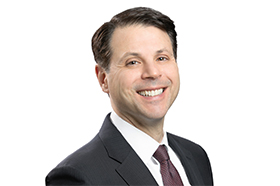New sources of funds emerge amid regional bank pullback
In the wake of surging interest rates and the collapse of three prominent banks, obtaining traditional bank funding has become a significant challenge for asset management and private equity firms.
However, industry leaders participating in a recent Grant Thornton webcast on trends in asset management shed light on the growing prominence of alternative capital sources for these firms. During the webcast, the panel of industry insiders revealed several noteworthy avenues through which firms can secure capital:
- Specialized private funds: Several private funds have emerged with a laser focus on investing in minority equity stakes. These funds not only offer capital but also provide an array of services aimed at assisting firms in enhancing their infrastructure and overall value.
- Preferred equity and debt structures: Firms now have access to preferred equity and debt structures that can be tailored to function effectively as long-term capital for the general partner (GP) of a private equity or asset management firm.
- Net asset value (NAV) financing deals: Capital providers are engaging in NAV financing deals wherein they thoroughly analyze the private equity portfolio, assessing the quality and diversity of the underlying portfolio companies. Based on this assessment, lenders determine the amount of capital to extend or the quantity of preferred equity to offer.
The emergence of these funding options has been welcome, as PitchBook data shows that private capital fundraising dipped in 2022 from a high mark in 2021.
Private capital fundraising activity fell precipitously in 2022, according to this bar chart using data from PitchBook.
Against the backdrop of a challenging fundraising landscape, one of the panelists brought attention to a noteworthy development—the middle market sector has experienced an impressive upswing in its share of minority equity transactions over the past three years. Moreover, in a promising observation, the panelist emphasized that there are currently no discernible signs of this trend abating in the foreseeable future.
The panelist attributes the growth of the middle market to a trio of pivotal factors:
- In a growth industry, transaction support is needed as many middle-market GPs are at an inflection point in the growth of their business, with capital and strategic needs to realize their objectives. Equity financing is helping meet those needs.
- Pools of capital focused on the middle market to address the needs of sponsors are growing. A common use case is funding future GP commitments to show limited partners (LPs) that GPs have skin in the game and are aligned with the LPs.
- Adding an equity component can incentivize the next generation of leadership as employees see the value of the business grow and understand the role they may play in succession. As firms that may have been founder-led boutiques grow into franchises with lasting value, they add product lines, seed funds, and bring on new teams.
The emerging source of funding has been welcomed in the wake of the regional bank crisis that hit in the early part of the year.
Regional bank pullback
The failures of Silicon Valley Bank, Signature Bank, and First Republic Bank earlier this year exerted a significant impact on the funding landscape, as highlighted by a participant in the webcast.
The repercussions of these collapses reverberated notably within the realm of middle-market private equity, as these players held substantial market shares in specific segments of the industry. Such a development rippled through the sector, leaving a mark on its operations.
In the current landscape, it appears that other regional banks may hesitate to extend the types of financing that were previously offered by the now-collapsed banks. The accessibility of low loan-to-value ratios and NAV financing from traditional banking institutions may not be as readily attainable as in the past. Consequently, the retreat of regional banks from these specific product areas has engendered a surge in demand for such offerings from nonbank entities.
The amplification in demand has been observed across various sectors, with real estate experiencing the most notable impact. Regional banks, historically prominent as major lenders in the commercial real estate domain, have markedly curtailed their involvement, responding to the disruption in the regional banking market and the transformative shifts in the commercial real estate sector.
While the panel acknowledged that regional bank funding availability is expected to rebound, it cautioned that such resurgence may only materialize after a significant passage of time.
NAV picks up steam
NAV financing, meanwhile, has accelerated rapidly as a financing option for GPs amid the liquidity challenges that have emerged over the past year.
“A lot of things have changed over the last 12 months, and this can give the GPs the option they need,” Grant Thornton National Managing Partner for Asset Management Michael Patanella said during the webcast.
During the discussion, the panel delved into the dynamics of NAV transactions, revealing that many such deals tend to fall within the range of $50 million to $100 million. These transactions typically exhibit maturities spanning three to five years, accompanied by interest rates often set at the Secured Overnight Financing Rate plus 600 to 800 basis points.
As this segment continues to undergo transformation, the panel highlighted the emergence of innovative options tailored to the unique capital-raising requirements of sponsors. Acknowledging the growing need for capital, one panelist astutely remarked, "The sale of an equity stake isn't a suitable approach for every situation." Hence, it comes as no surprise that the demand for diverse solutions, including those on the debt side, is witnessing an upswing.
The evolving landscape presents an opportunity for creative financial arrangements that align precisely with the capital needs of sponsors seeking optimal strategies.
Pursuing efficiency
A stagnant economy continues to make efficiency a priority across several areas for GPs, according to webcast participants:
- "There’s an awful lot of pressure right now on fundraising; we’re seeing that now with a lot of the operating companies. As a result, you’re likely to see continued fee concession and pressure…So perhaps that might put even more focus on being incredibly efficient about the way GPs use both fund-level and portfolio company-level leverage,” noted one of the panelists.
- “A lot of firms are spending a lot of time really looking at…where do they want to put any of their extra dollars?” Patanella said. “Do they put the brakes on areas such as ESG or AI and technology? There are things like cybersecurity that you really can’t defer because of recent regulatory requirements and threats there.”
"Fee pressure on managers is an ever-present subject," a panelist said, reflecting the ongoing industry discourse. While top-performing managers retain the ability to command premium prices, an increasing number of managers are diversifying their offerings by launching ancillary strategies or higher-capacity approaches. These alternative strategies may be associated with comparatively lower fee rates, owing to the operational efficiency and streamlined processes exhibited by these well-managed firms. Such firms have the necessary operating leverage and possess adept mechanisms to execute investment decisions in a highly efficient manner.
Amid the prevailing need for cautious resource management, GPs are also making notable strides in achieving their objectives by embracing emerging funding strategies. A panelist observed that clients are employing creative thinking to enhance the prospects of their portfolio companies through additional capital, simultaneously emphasizing the unwavering commitment of GPs to their businesses. Such endeavors prove beneficial in the fundraising realm, where investors are keenly attuned to such developments.
"The ability to access capital that is both innovative and cost-effective has been one of the transformative shifts in fund finance over the past several years," the panelist said. This evolution enables GPs to tap into capital sources that offer inventive solutions while optimizing cost efficiency, fostering a positive impact on their fundraising endeavors.
Our asset management featured industry insights

No Results Found. Please search again using different keywords and/or filters.


Share with your network
Share